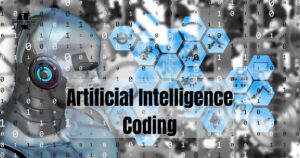Artificial intelligence (AI) is changing how we protect our digital world. By quickly detecting threats and learning from past attacks, AI is revolutionizing cybersecurity. This technology is making cyber security faster, smarter, and more effective. In this article, we’ll explore how AI is changing the way we defend against cyber threats.
Picture a reality where cyber threats are stopped in their tracks before, they emerge, where defense systems adapt and evolve in real-time. This is no longer a distant dream – it’s the new normal. The future of digital security is upon us, delivering unprecedented speed, intelligence, and precision in the fight against cybercrime. Curious to see how this game-changing technology is changing our online security?
Cyber threats are being detected and neutralized faster than ever, with defenses that learn and adapt in real-time. This innovative approach is reshaping the digital security landscape, bringing unprecedented speed and intelligence to our online safety. Want to know how this technology is changing the way we stay safe?
Essential for advanced cybersecurity solutions
As our reliance on digital technologies increases, so does the risk of cyber attacks. Cyber threats are becoming more sophisticated and diverse, from ransomware and phishing to advanced persistent threats (APTs).
Traditional cybersecurity solutions, which often rely on signature-based detection and manual monitoring, struggle to keep up with the evolving threat landscape.
Traditional methods usually involve using predefined signatures to identify known threats. While effective against familiar malware, this approach falls short when dealing with new, unknown threats or sophisticated attack techniques.
The growing volume of data and the complexity of modern networks make traditional security measures more complex, creating a strong need for innovative solutions.
AI offers a powerful solution to these challenges. By automating and augmenting traditional security practices, AI provides a more dynamic and adaptive approach to cybersecurity.
What is AI and how does it apply to cybersecurity?
Artificial intelligence encompasses a range of technologies designed to perform tasks that normally require human intelligence. In the context of cybersecurity, AI includes the use of machine learning (ML), deep learning, and natural language processing (NLP) to improve threat detection, response, and prevention.
- Machine Learning (ML): ML algorithms enable systems to learn from data and improve over time without explicit programming. In cybersecurity, ML models analyze patterns in network traffic, user behavior, and system logs to identify anomalies and potential threats.
- Deep Learning: A subset of ML, deep learning uses neural networks with multiple layers to analyze complex data patterns. It specializes in identifying subtle and complex threats that traditional methods may miss.
- Natural Language Processing (NLP): NLP allows AI systems to understand and interpret human language. In cybersecurity, NLP can be used to analyze text-based threats, such as phishing emails and malicious messages, enhancing the detection of social engineering attacks.
Enhancing threat detection with AI

One of the most important contributions of AI to cybersecurity is the enhancement of threat detection capabilities. Traditional security systems often rely on static signatures to identify known threats. However, this approach is limited in its ability to detect new or changed threats.
AI transforms threat detection through two primary methods:
- Behavioral analysis: AI systems continuously monitor and analyze the behavior of users, applications, and network traffic. By establishing a baseline of normal activity, AI can detect deviations that could indicate malicious behavior. For example, if a user who normally only accesses certain files suddenly tries to download a large amount of data, the AI can flag it as suspicious.
- Anomaly detection: AI uses machine learning algorithms to detect anomalies that deviate from established patterns. This method is effective for identifying previously unknown threats that do not match known signatures. AI’s ability to analyze vast amounts of data in real time allows for faster and more accurate threat identification.
Automated threat response
An effective threat response is critical to minimizing damage and recovering from attacks. AI enhances response capabilities by automating various tasks, helping to speed up the response process and reduce the workload on security teams.
Here, A Future Insight of AI Transforming Agriculture
- Automated Incident Response: AI can respond to detected threats by automatically executing predefined actions, such as isolating infected systems, intercepting malicious traffic, and initiating preventative measures. This automation helps mitigate risks quickly and reduces the risk of further loss.
- Alert Management: AI systems can analyze and prioritize security alerts based on their severity and potential impact. By filtering out false positives and highlighting critical alerts, AI helps security teams focus on the most critical issues while improving overall performance.
Predictive analytics and proactive defense
AI’s predictive capabilities represent a major advance in cybersecurity. By analyzing historical data and identifying trends, AI can predict potential future threats and enable proactive defense measures.
- Threat intelligence: AI systems collect and analyze data from a variety of sources, including threat feeds, security reports, and dark web monitoring. This information helps identify emerging threats and provides actionable insights for proactive defense strategies.
- Risk management: AI can predict which risks can be exploited based on current risk trends and historical data. This allows organizations to prioritize patching and remediation efforts, addressing potential vulnerabilities before attackers exploit them.
User behavior analytics and insider threat detection
Understanding user behavior is critical to detecting insider threats and compromised accounts. AI enhances user behavior analytics (UBA) by continuously monitoring and analyzing user interactions with systems and data.
- Insider threat detection: AI can identify unusual behavior patterns that may indicate insider threats, such as unauthorized access to sensitive information or unusual changes in user activity. By analyzing user behavior in real time, AI helps detect potential threats from within an organization.
- Account Compromise Detection: AI can detect signs of compromised accounts by analyzing login patterns, geographic locations, and device types. For example, if an account is accessed from an unusual location or device, AI can flag it as suspicious and take appropriate steps to mitigate risks.
Automate routine security tasks

Cybersecurity involves some repetitive tasks that are time-consuming and prone to human error. AI can automate these routine tasks, improving efficiency and consistency.
- Patch Management: AI can identify and apply security patches and updates across systems, ensuring that vulnerabilities are addressed quickly. Automation of patch management reduces the risk of outdated software and incompatibilities.
- Log Analysis: AI systems can analyze logs from various sources, such as servers, network devices, and applications, to identify potential security incidents. Automated log analysis helps detect anomalies and generate actionable insights for further investigation.
Here, AI Tools Shaping the Future of Education
Challenges and considerations
While AI offers numerous benefits for cybersecurity, there are challenges and considerations that organizations must address:
- Adversary attacks: Cybercriminals can attempt to trick AI systems by providing them with false or misleading data. Ensuring the robustness of AI algorithms and their resistance to adversarial attacks is essential to maintaining accurate threat identification and response.
- Data privacy and ethics: AI systems require access to large amounts of data, raising concerns about privacy and data protection. Organizations must ensure that AI implementations comply with data privacy regulations and ethical standards.
- Bias and fairness: AI algorithms can inadvertently introduce biases based on the data they are trained on. Addressing these biases is critical to ensuring fair and accurate risk identification and response.
The Future of AI in Cybersecurity
The future of AI in cyber security is bright and full of potential. As technology advances, AI systems will become more sophisticated and capable. Key trends and developments to watch include:
- Integration with emerging technologies: AI will increasingly integrate with other technologies, such as blockchain and quantum computing, to further enhance security. For example, blockchain could provide immutable logs of AI decision-making processes, adding an extra layer of transparency and accountability.
- Advanced Machine Learning Models: Future AI systems will use more advanced machine learning models, improving the ability to detect and respond to complex threats. These models will be able to analyze more nuanced data patterns and provide more accurate risk predictions.
- Adaptive Security Framework: AI will play a key role in developing adaptive security frameworks that can evolve in response to new threats and changing environments. This framework will enable organizations to continuously improve their security posture and stay ahead of emerging threats.
Frequently Asked Questions
What are the key ways in which AI is changing cybersecurity?
AI improves threat detection, automates responses, and provides predictive analytics to stay ahead of cyber threats.
How does AI augment traditional threat detection methods?
AI uses behavior-based and anomaly detection to identify new and unknown threats that traditional methods might miss.
What are the underlying technologies behind AI in cyber security?
Key technologies include machine learning, deep learning, and natural language processing.
How does machine learning contribute to improving cybersecurity defenses?
Machine learning analyzes large data sets to identify patterns and anomalies, enhancing threat detection and prevention.
What role does natural language processing play in cyber threat detection?
NLP helps analyze and interpret text-based threats, such as phishing emails, improving detection of social engineering attacks.
Final Thoughts
Artificial intelligence is revolutionizing cybersecurity by enabling faster, more accurate threat detection, enhanced response capabilities, and predictive analytics. Despite the challenges, the benefits of AI in protecting our digital environment are substantial. By leveraging AI technology, organizations can build stronger defenses, stay ahead of emerging threats, and ensure strong cybersecurity.
In a world where cyber threats are becoming increasingly sophisticated and pervasive, embracing AI is essential to stay ahead of attackers and protect our digital future. As AI continues to evolve, its role in cybersecurity will become even more important, helping to protect our data, systems and online activities from ever-present cyber threats.









